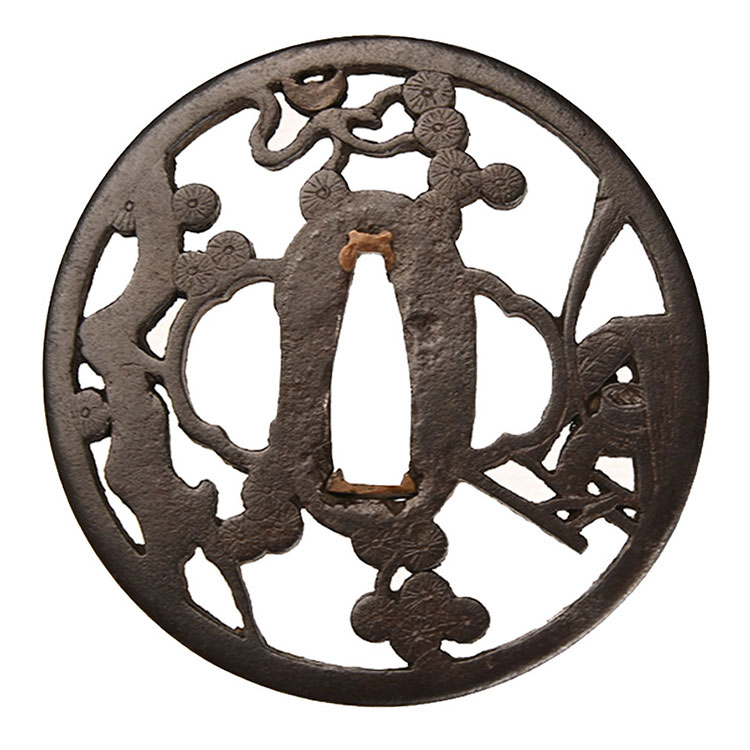
保存刀装具Hozon Tousougu
林鍔Hayashi Tsuba
No.373692林 松樹塩屋透鍔Hayashi Syouju Shioya-sukashi Tsuba
- 極めKiwame
- 林Hayashi
- 法量Size
-
縦 8.0cm 横 8.0cm 切羽台 0.5cm 中心孔縦 2.52cm 中心孔横 0.91cm 重量 117.0g
Length 8.0cm Width 8.0cm Seppadai 0.5cm Nakaoana-Length 2.52cm Nakaoana-Width 0.91cm Weight 117.0g
- 国Country
- 肥後Higo
- 説明Drscription
- 丸形 鉄磨地 地透 毛彫 角耳小肉
林一派は同国飽田郡春日村に住したので春日派ともいわれ,平田,西垣,志水の3家とともに肥後金工の四大派を形成した。
林家の家系は、又七を初代にとし、二代藤平(重光)三代藤八重房 四代平蔵重次五代又平勝家(家久)六代又八 七代藤七と継承して幕末期まで繁昌した。
林家初代又七は、通称を清三郎といい、1605年(慶長10)鉄砲工・清兵衛の次男として生まれる。またの説に1613年(慶長13)生まれとするものもある。
肥後熊本藩主、細川忠利に抱えられ,鐔工に転じて肥後鐔を完成した。林家はその主流をなし,とくに又七は肥後金工の祖といわれている。又七の作風は,鉄鍔の製作を得意とし、鉄の鍛が抜群によく 鉄錆のよさに加えて金象眼の巧みさと精巧な透しに特色がある。重要文化財の「破扇(はせん)桜象眼鐔」「桜九曜文透象眼鐔」をはじめ、遠見松透、投桐(なげぎり)透、御紋透などがある。Marugata Tetsumigakiji Jisukashi Kebori Kakumimikoniku
He was employed by Tadatoshi Hosokawa, the lord of the Higo Kumamoto Domain, and became a tsuba maker, completing Higo tsuba. The Hayashi family is the mainstream, and Matashichi in particular is said to be the founder of Higo metalwork. Matashichi's style specializes in the production of iron tsuba, and is characterized by excellent iron forging, and in addition to the quality of iron rust, the skillful use of gold inlays and elaborate openwork. In addition to the important cultural property [[Hasen cherry blossom inlaid tsuba]] [[Sakura kuyomon transparent inlaid tsuba]], there are Tomimats-Sukashi, Nagegiri Sukashi, and Gomon Sukashi.


